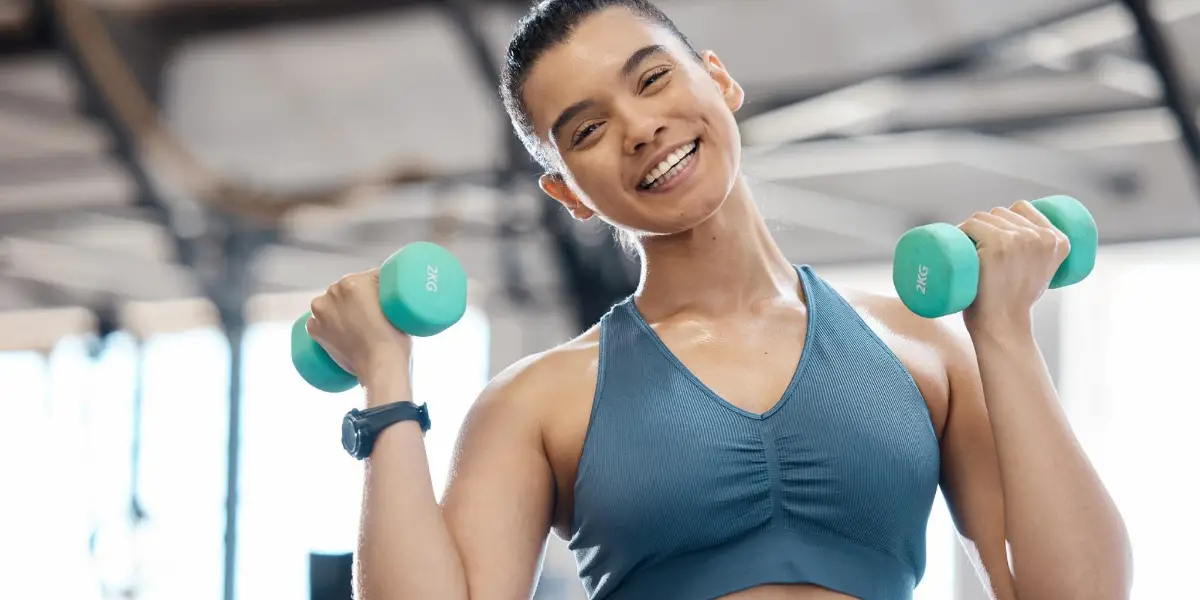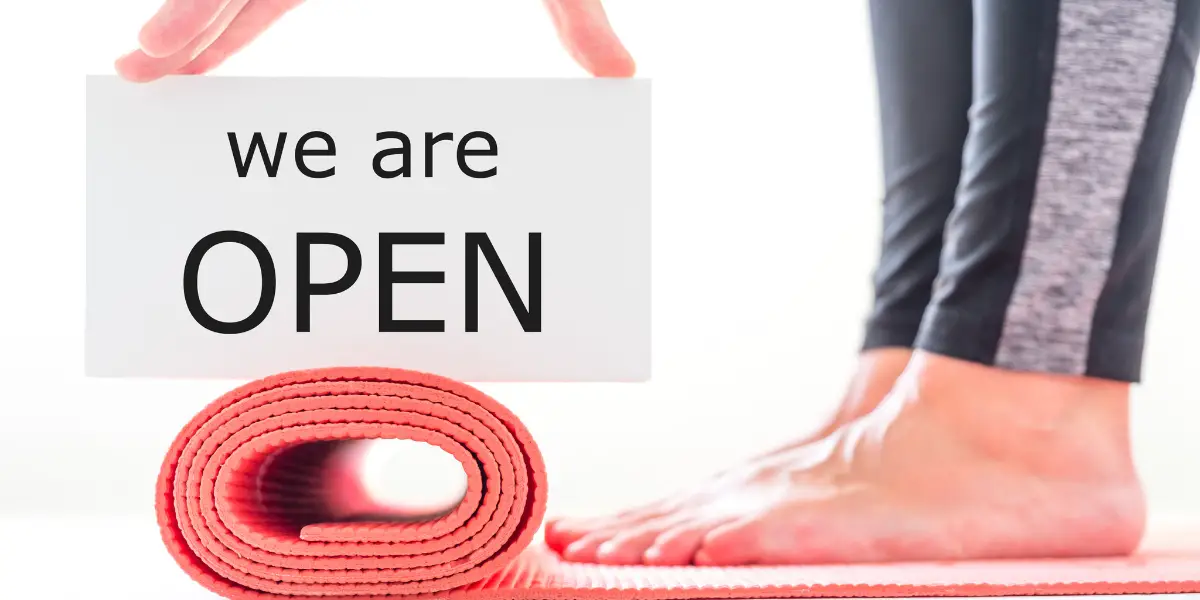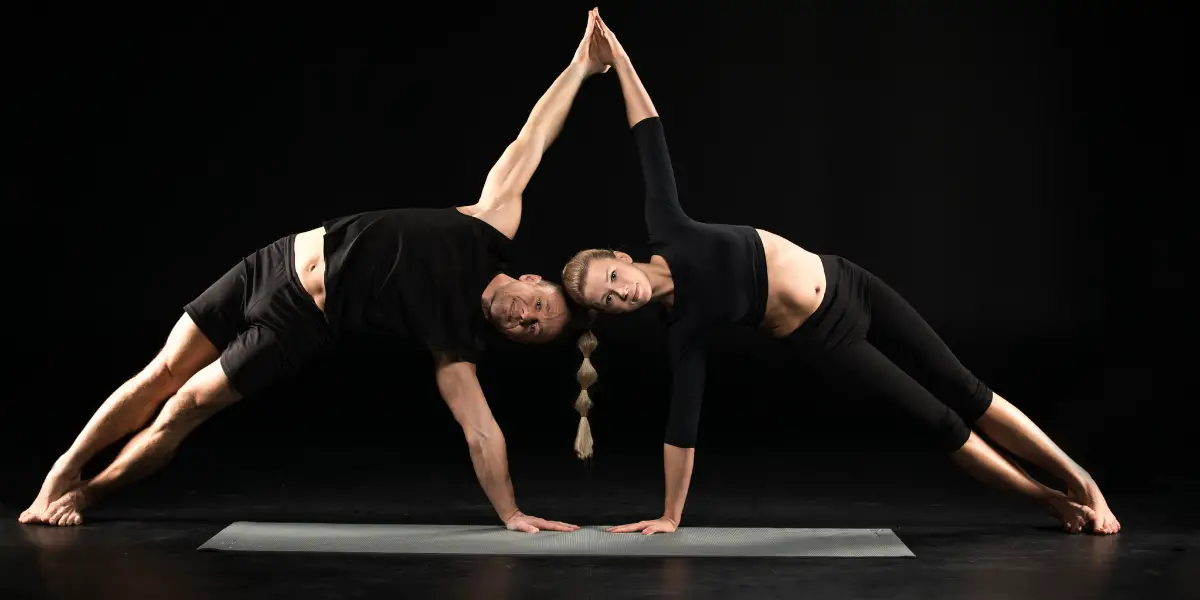While Pilates is well known as a form of exercise that doesn’t require any equipment and that makes use of your own body weight, it doesn’t mean that we don’t use weight at all. So how heavy should your weights be when doing Pilates?
When using weights in Pilates, you should use 1 – 2kg hand weights. These add challenge to your workout without preventing you from performing your moves correctly.
If you’re just beginning your Pilates journey, I would recommend NOT using weights at all to start with. In the beginning, you should be focusing on getting the correct technique using just your body weight alone.
This will help you build up better core strength and stronger muscles. You should only add weights when you are well practised and feel you need more of a challenge.
It’s important to use the correct weight at the correct time in your journey because to do so too early could result in a loss of alignment and focus being shifted on the extremity rather than the core – which is what Pilates is all about.
As you progress and get stronger, you can gradually increase the weight of the hand weights you use, keep in mind they are only to add challenge, and you are unlikely to ever use very heavy weights as you might do in a weight lifting environment.
Using the proper weight is also important for preventing injury and avoiding poor movement patterns. You’ll know if you’ve gone too heavy if you’re unable to maintain good form and your concentrating on the hand your weight is in over everything else.
Finally, remember that the most important factor in choosing weights is feel. You should always use a weight that feels comfortable and allows you to maintain proper form throughout the entire exercise.
How heavy should Pilates weights be for beginners/intermediate users/advanced users?
When it comes to Pilates weights, there is no definitive answer. It really depends on your goals and how comfortable you feel with the exercises.
Generally speaking, beginners shouldn’t use weights at all, intermediate users should stick to light hand weights, and advanced users should try heavier weights.
You might think that as a beginner you should pick heavier weights because they’ll help you progress more quickly.
The truth is that you’re more likely to slow down if you don’t have the strength and confidence to handle the additional challenge of lifting weights.
Of course, you don’t want to abandon weight lifting altogether! It can be beneficial to carry out a separate weight lifting workout before combining it with Pilates.
Cross-training is important as it offers a range of health benefits that you might not get from one activity alone. Just make sure that you consider your goals first and choose an activity that will best help you meet them.
How does the weight of the Pilates weights affect the workout?
When you are looking for Pilates weights, remember that the heavier they are, the more intense the workout will be. You want to feel the work from the first rep, because you will be using large muscle groups in these workouts. Heavier weights also help to tone and sculpt your body.
However, you should ask yourself if you can still maintain good form during every exercise and set with a lighter weight.
If not, then it is time to focus on working out without any equipment to begin with and then introducing light weights.
Once you reach the point where light weights don’t add much challenge, and you’re still easily able to maintain the correct form, it is only then you should go up in weight.
Remember that the heavier the load, the more intense and beneficial it is, providing you are able to maintain the proper form while holding that heavier weight.
Pilates and weight training are great for a slim build as well as losing weight; however, weight training is more effective for weight loss than Pilates.
In order to see results from either type of workout though, you must have a proper diet. Neither Pilates nor weight training will achieve your desired results without it!
What are the benefits of using heavier weights in Pilates?
My general recommendation is to always use light weights when doing a Pilates workout, but there are benefits to moving up to heavier weights if you have good strength.
Any additional weight used will increase how much your muscles have to work, which helps stimulate changes in endurance, strength or muscle growth.
Weighted Pilates moves help create functional muscles, ones that are used in everyday life activities.
Pilates is a form of exercise that promotes an increase in flexibility, strength and balance. It achieves this through the use of weights to create resistance.
However, as it makes use of your body weight to create lean muscle, you won’t gain the strong muscle results as dedicated weight lifting (see: Pilates vs. Weights: Does one replace the other?)
If you’re looking for a workout that will help you build muscle and also improve your flexibility, Pilates is a great choice, provided you keep in mind its limitations.
Are there any risks associated with using heavier weights in Pilates?
Just like any other form of exercise, there are risks associated with using heavier weights in Pilates. For example, if you’re not used to lifting heavy weights, you could end up injuring yourself. Additionally, using too much weight can lead to joint pain and other problems.
It’s important to remember that hand weights and wrist weights should not be used as a substitute for your regular Pilates workout.
And finally, always consult with a doctor before starting any new fitness regimen.
How can I increase the weight of my Pilates weights gradually?
When you are first starting out with Pilates, it is important to use a lighter weight. This will help you focus on the core exercises and maintain proper form throughout the exercise.
As you progress in your Pilates practice, you will need to increase your weight gradually. This will help you get the most out of your exercise.
Even though I’m a Pilates instructor I don’t tend to use anything other than small hand weights. This is because proper movement can be very challenging already and helps to build up muscle strength.
If I were looking to increase muscular strength and to have visibly larger muscles, then I would use a different type of exercise in addition to Pilates.
What are some common mistakes people make when using heavier weights in Pilates?
When introducing weights the most common mistake I see made is that people often try to use too much weight. This can create momentum and leverage challenges that pull you out of alignment, stressing the neck, shoulders, and back.
Many don’t focus on their form when lifting heavy weights, which can also lead to injuries. And finally, another mistake is using ankle weights when they’re not necessary; they can add unnecessary stress to the ankles and knees.
In general, it’s best to avoid using heavy weights in Pilates. If you want to use them during a workout session, make sure they are just light ones–not more than 3 pounds for women or 4-6 pounds for men. This will help ensure that you’re able to maintain proper form throughout the entire exercise routine and minimize your risk of injury.
Final thought
Pilates is a great way to build strength, improve balance and flexibility, and even burn fat. It can also be a useful tool for incorporating heavier weights into your routine safely.
When using heavier weights in Pilates, it is important to start small and build up slowly over time.
Additionally, make sure you have the right equipment and focus on proper form for optimal results.
Ultimately, use caution when lifting heavier weights in Pilates and always listen to your body if something doesn’t feel right.




